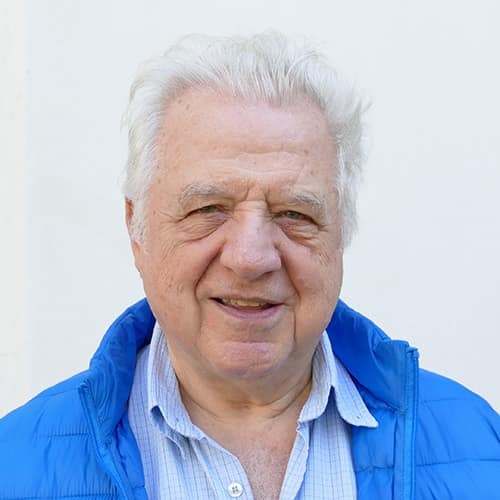NEW IDEAS IN COMPLEXITY SCIENCE
On May 24th, 2018, the First External Faculty Meeting of the Hub started with a public conference.
In short talks complexity scientists from all around globe shared their visions on the question “Complexity: Where do we go from here?”
What are the open, the most pressing, the most promising questions to an understanding of complexity and Big Data?
Find the talks of all conference participants (in order of appearance) on our Youtube channel in the playlist of the conference.
An overview with photographs of the event and links to all available slides can be found here.
CONSTANTINO TSALLIS
“COMPLEXITY IS THE PROBLEM, BUT IT CAN ALSO BE THE SOLUTION TO THE PROBLEM”
The first lecture of the second afternoon session was given by Constantino Tsallis, emeritus researcher at the Centro Brasileiro de Pesquisas Fisicas in Rio de Janeiro/Brazil. Constantino is best known for introducing Tsallis entropy and Tsallis statistics, and for shaping views on power laws in complex systems.
Constantino chooses to take a philosophical look at complexity, comparing it to beauty, another somewhat nebulous concept. His talk challenges the audience to think about complexity and beauty and how to identify and define them, with his slides showing parallel images of complexity and beauty. Both beauty and complexity are easy to identify, as this is an intuitive reaction and doesn’t require explanation, but defining them is more difficult, as it is more rational.
For example, Constantino’s first slide shows a picture of a sculpture of Venus, alongside a picture from the Wall Street stock exchange in New York, to show how beauty and complexity can both be uncertain. Another, illustrating how both can be simple, shows the famous Egyptian bust of Nefertiti, next to the Boltzmann entropy equation. A third slide shows how beauty and complexity can both be useful, with a picture of the caryatids holding up the roof at the Erechtheion temple in Athens, Greece, and a mammogram, before and after processing. Mammogram pictures are processed using entropic/complex concepts and while the unprocessed image shows little, the processes image clearly shows the tumours.
“Is complexity in the system, or is complexity in the observer of the system? Is it objective, or is it something subjective?” Constantino asks. “Complexity, is it a science, or is it an opinion?”
Complexity is the problem, but it can also be the solution to the problem, says Constantino, concluding that it is a new and useful paradigm.
CLICK FOR CONSTANTINO’S SLIDES.
See the video in full lenght here:

